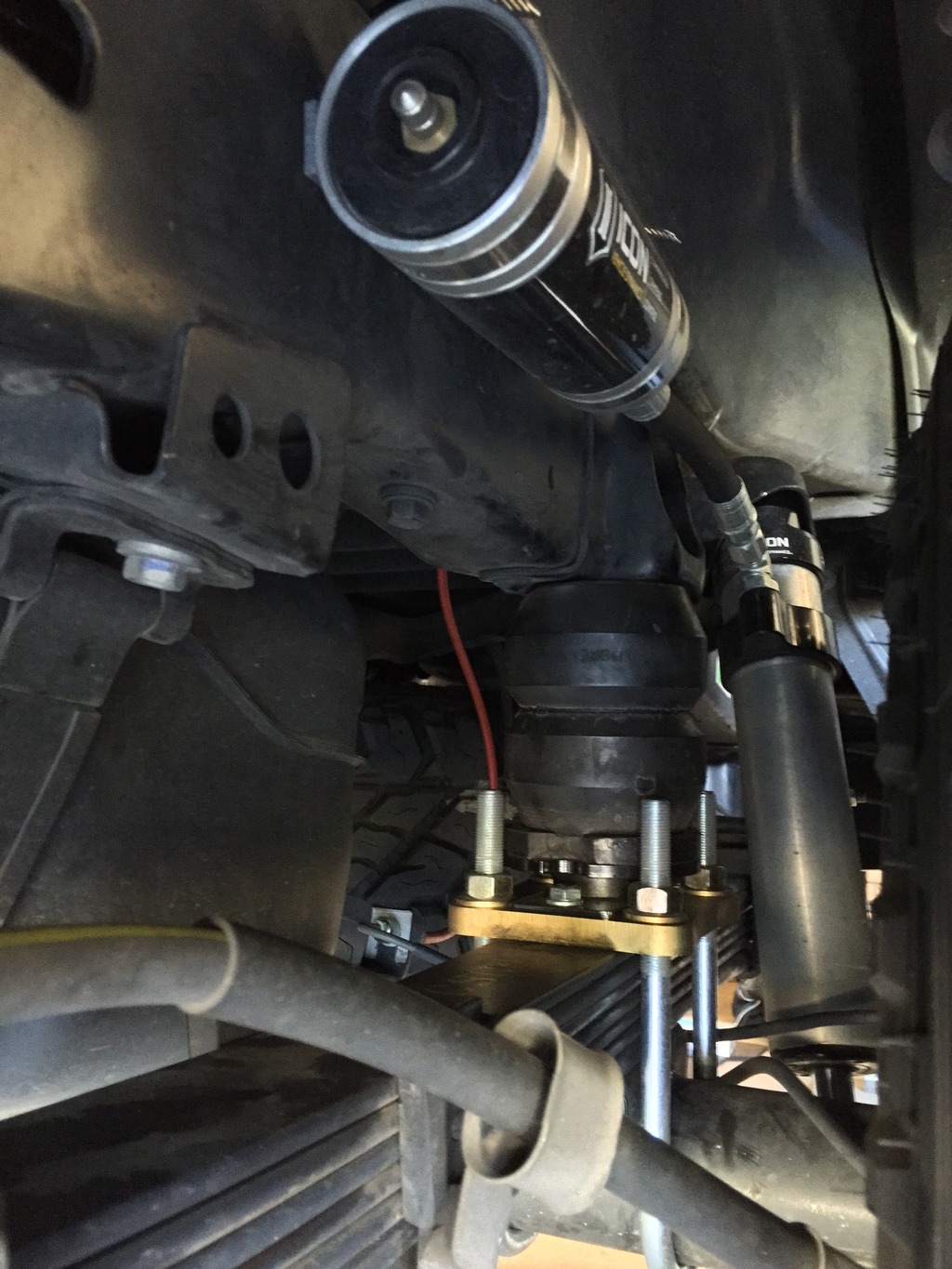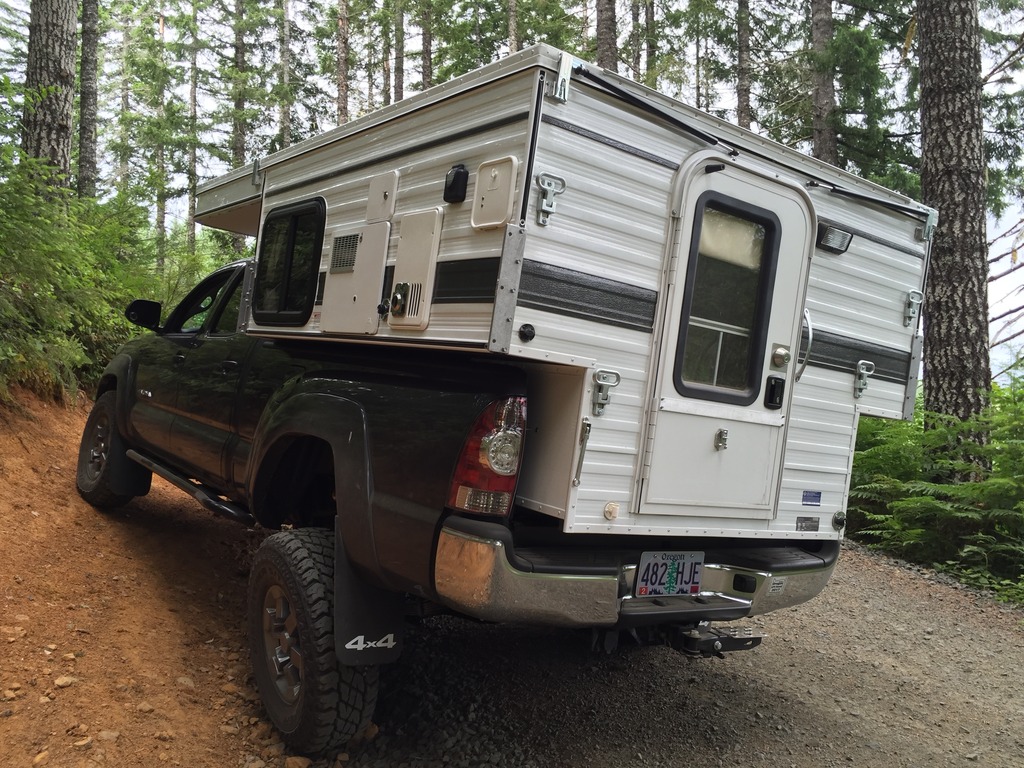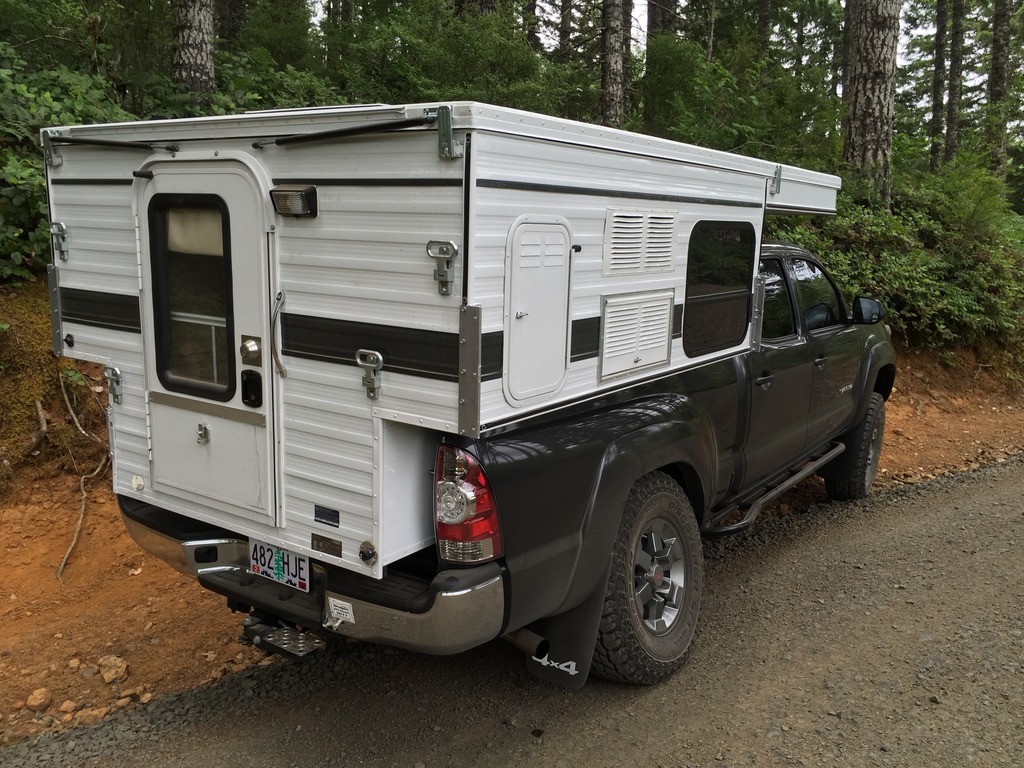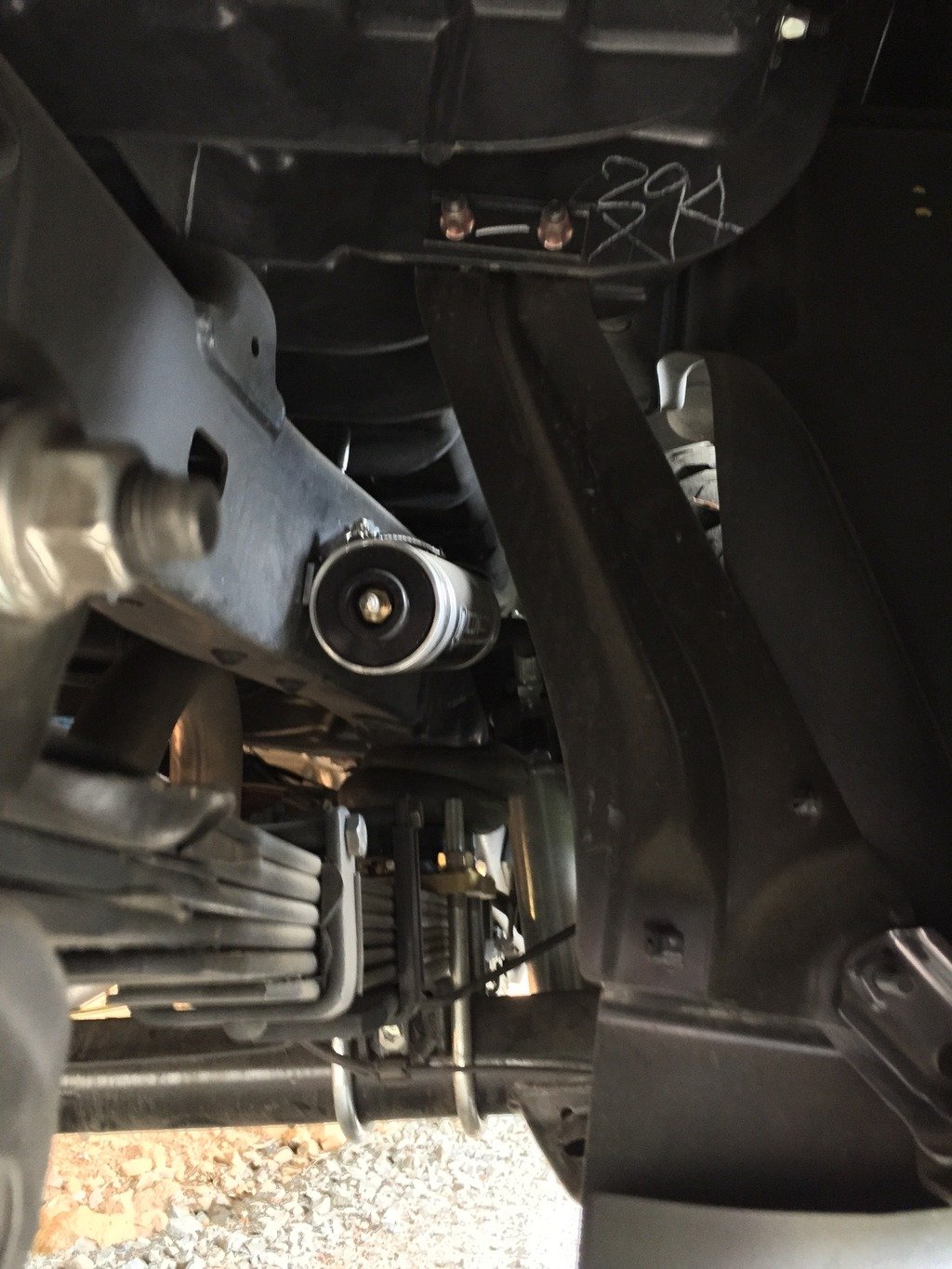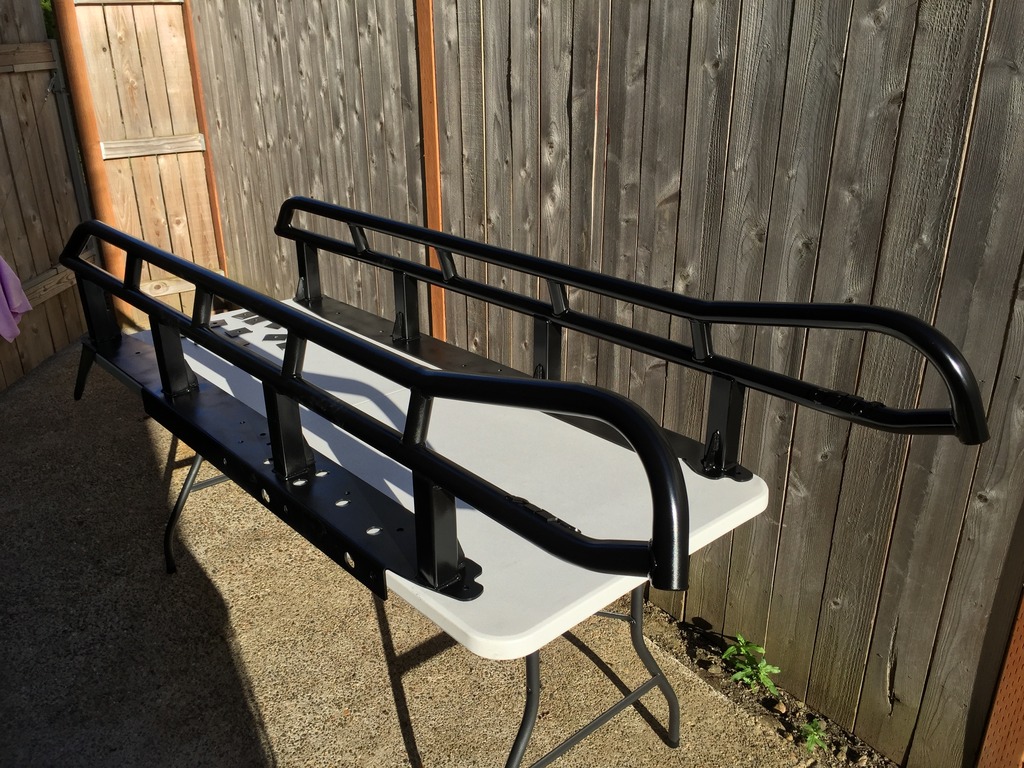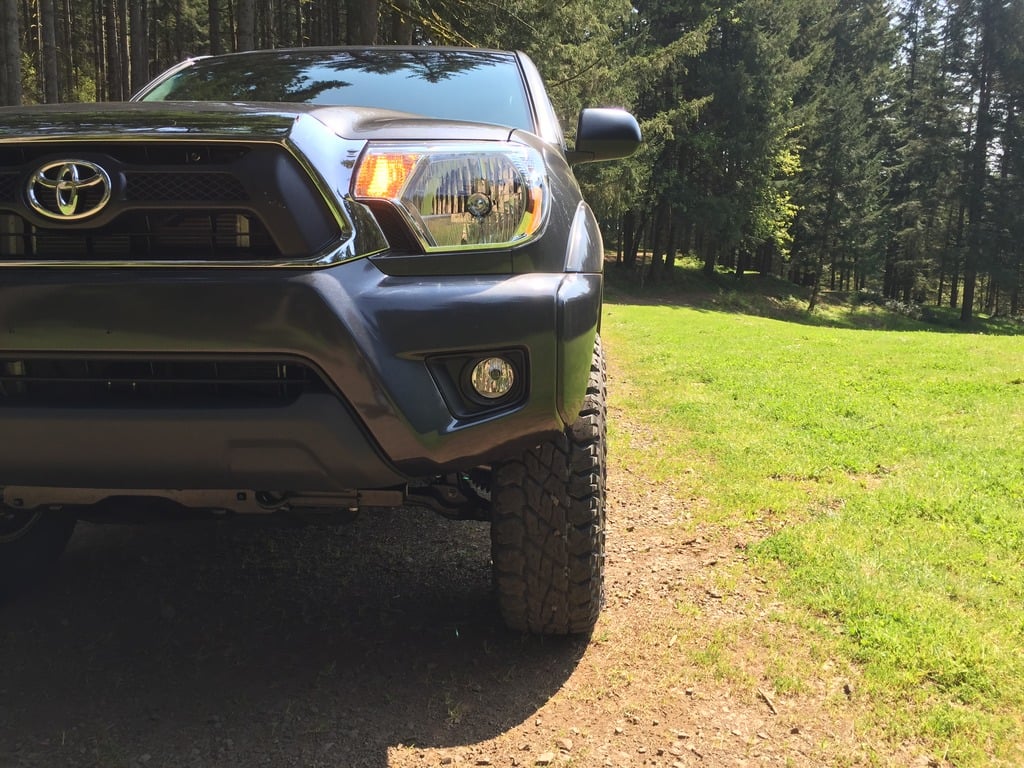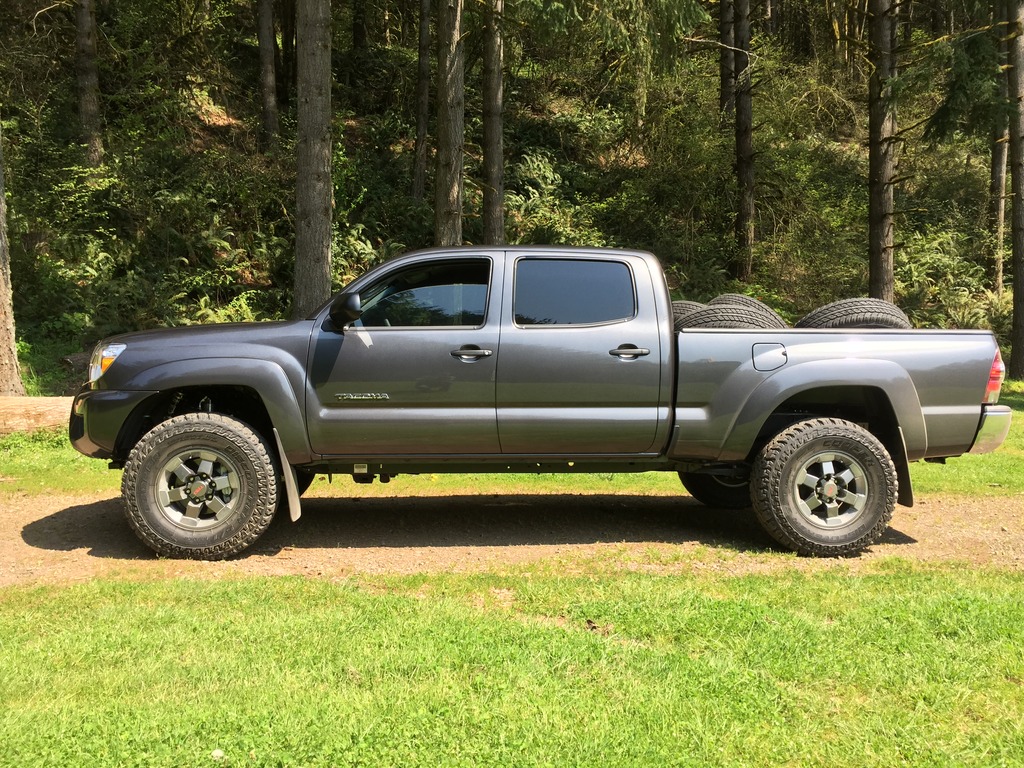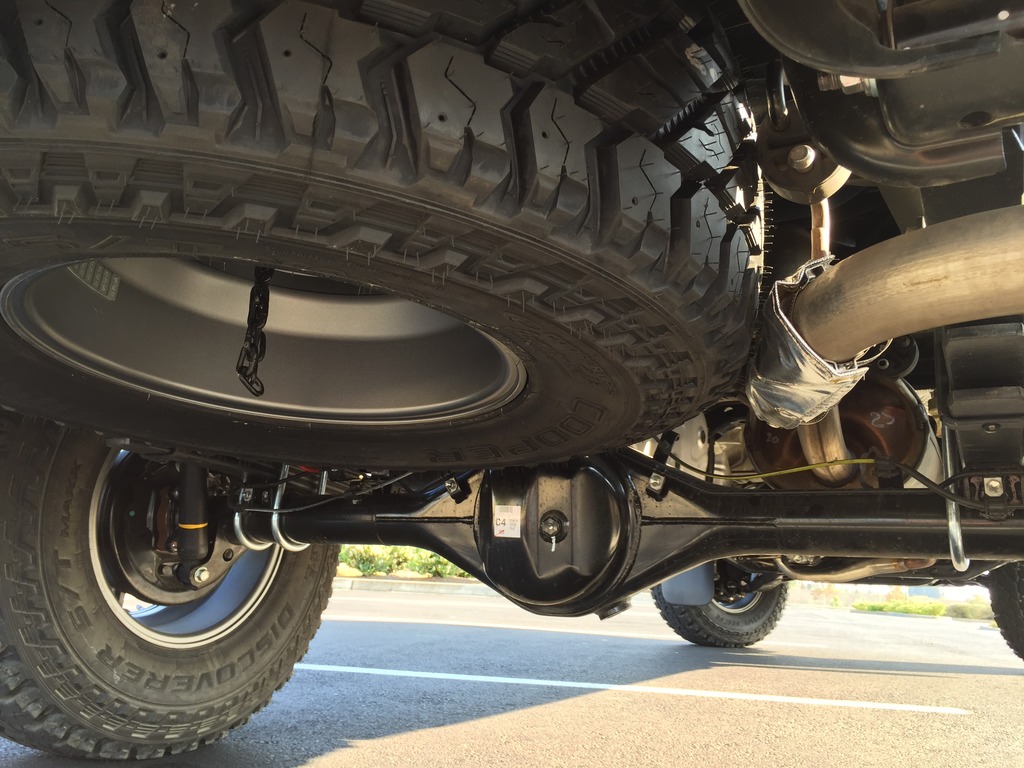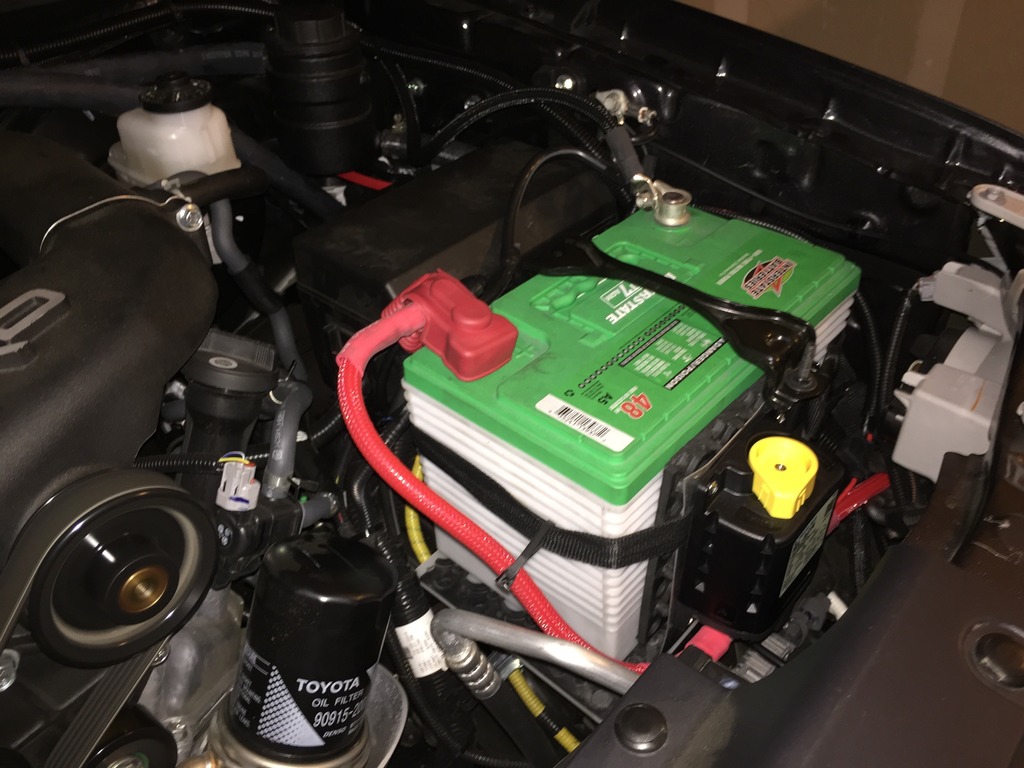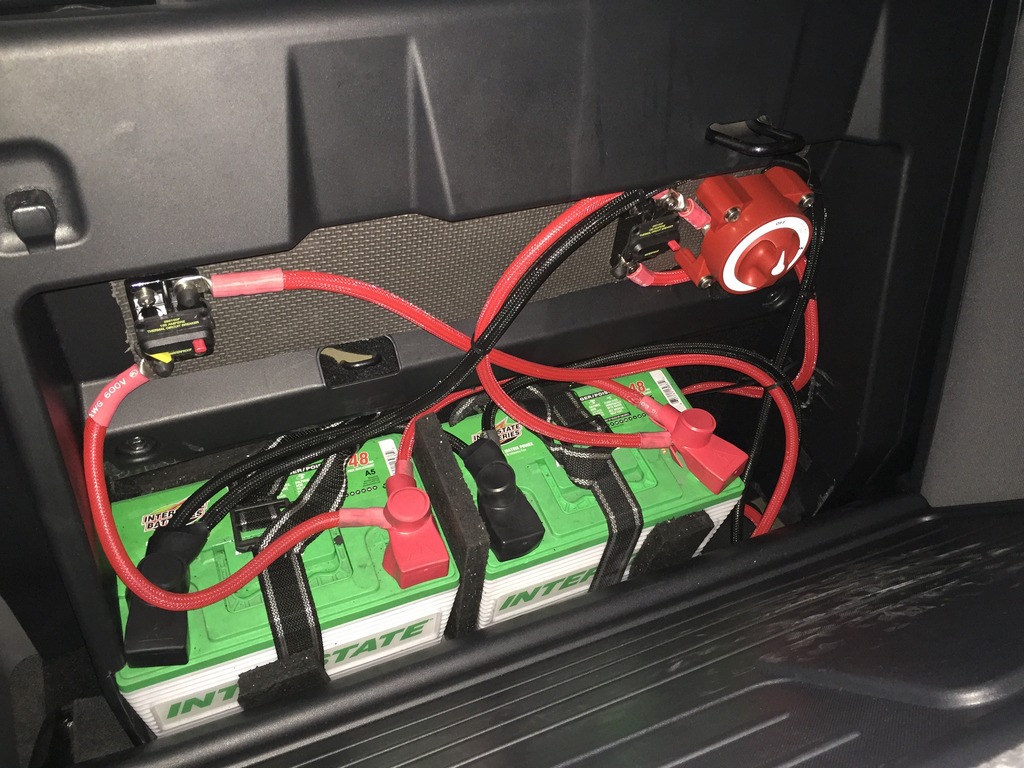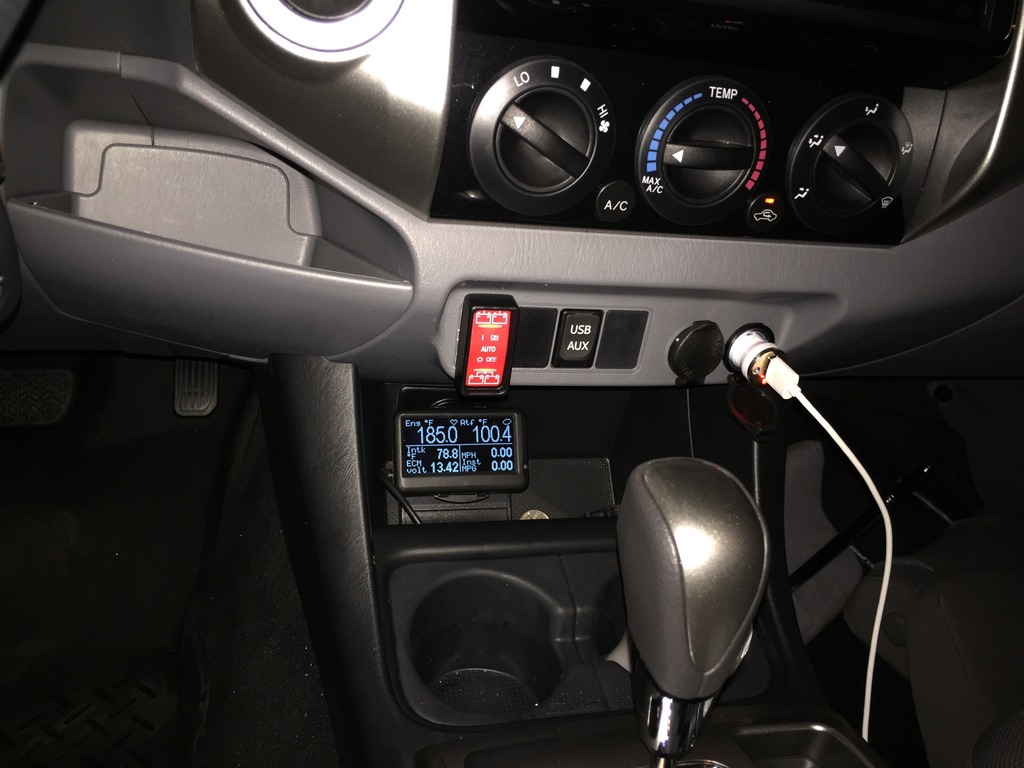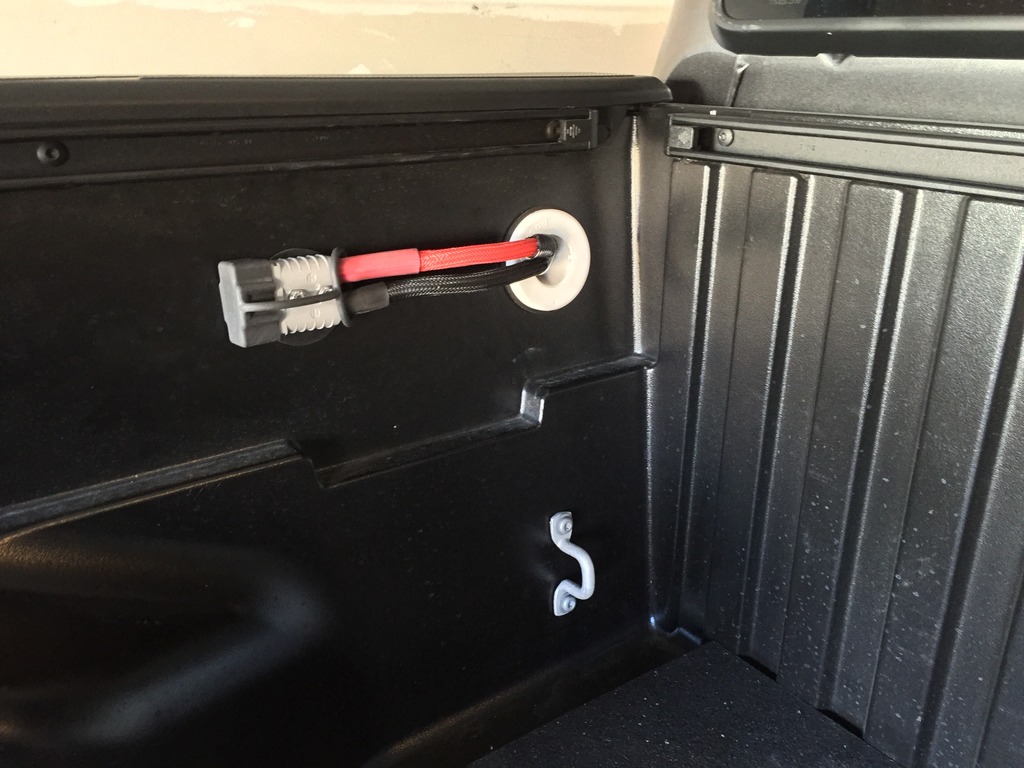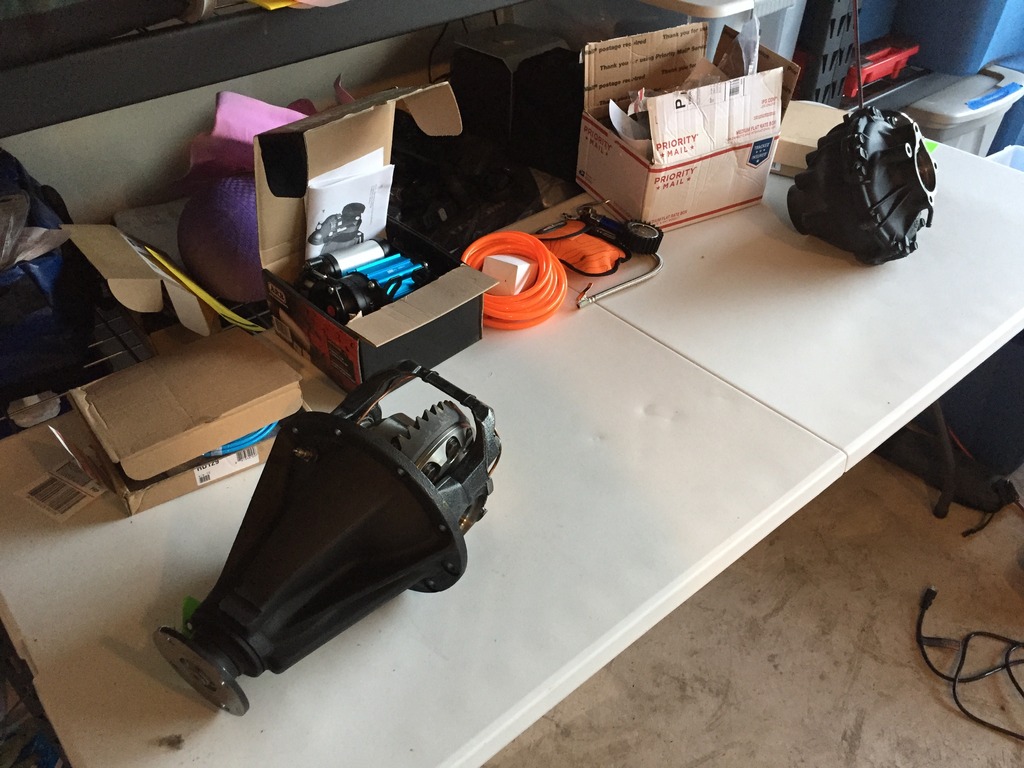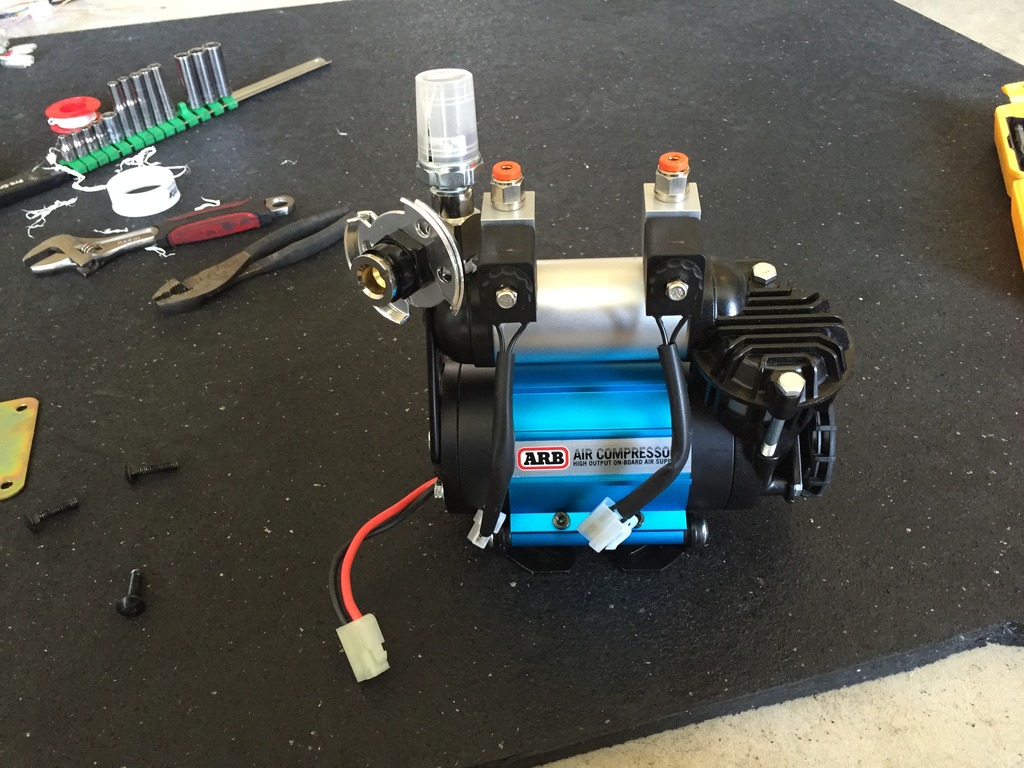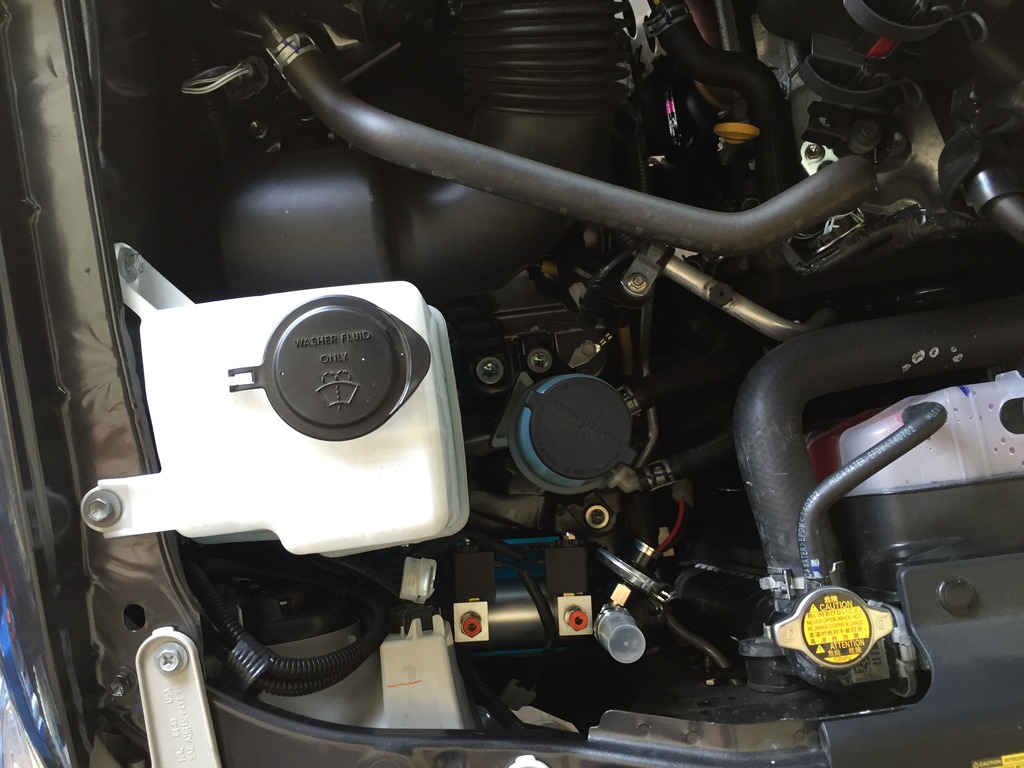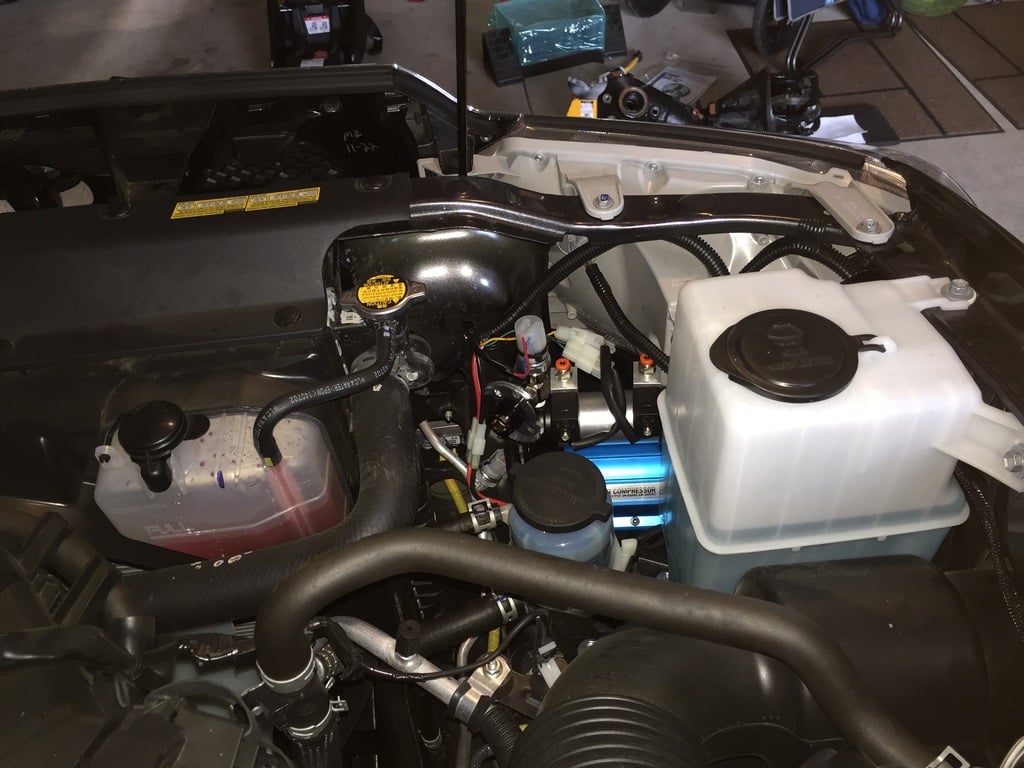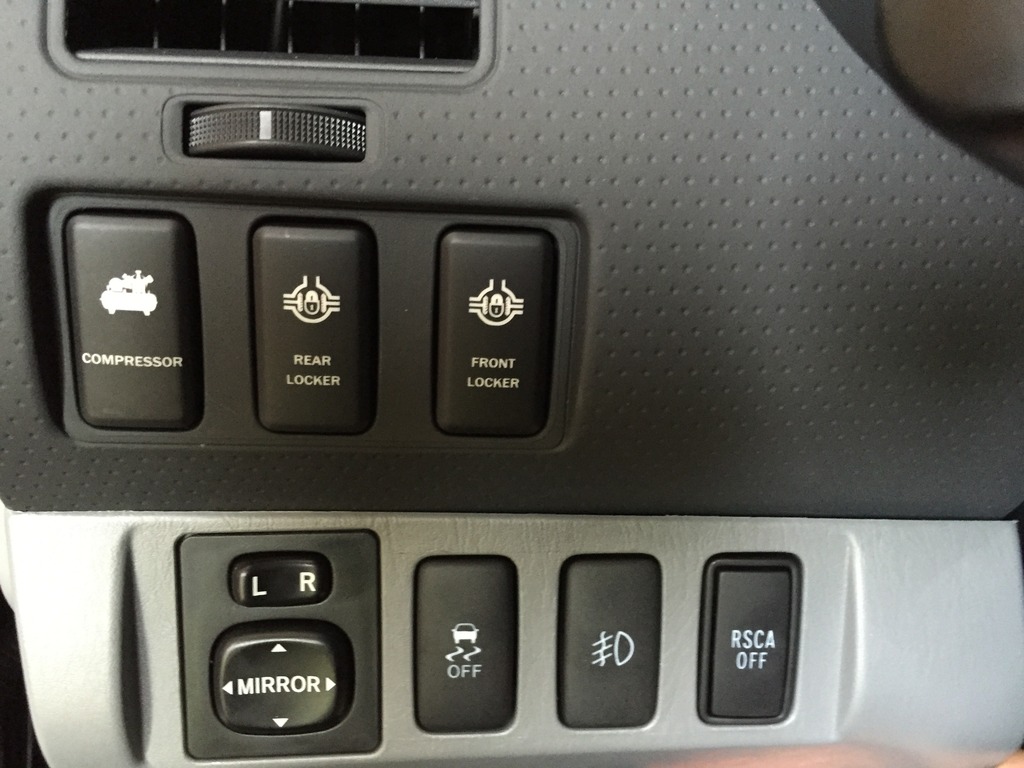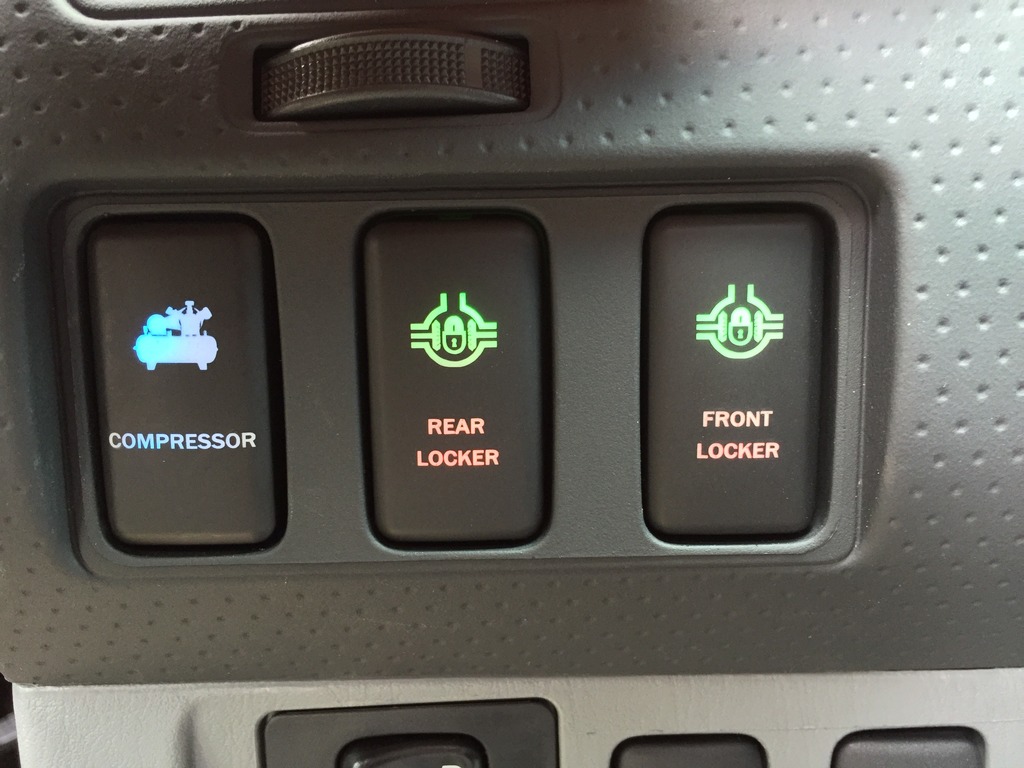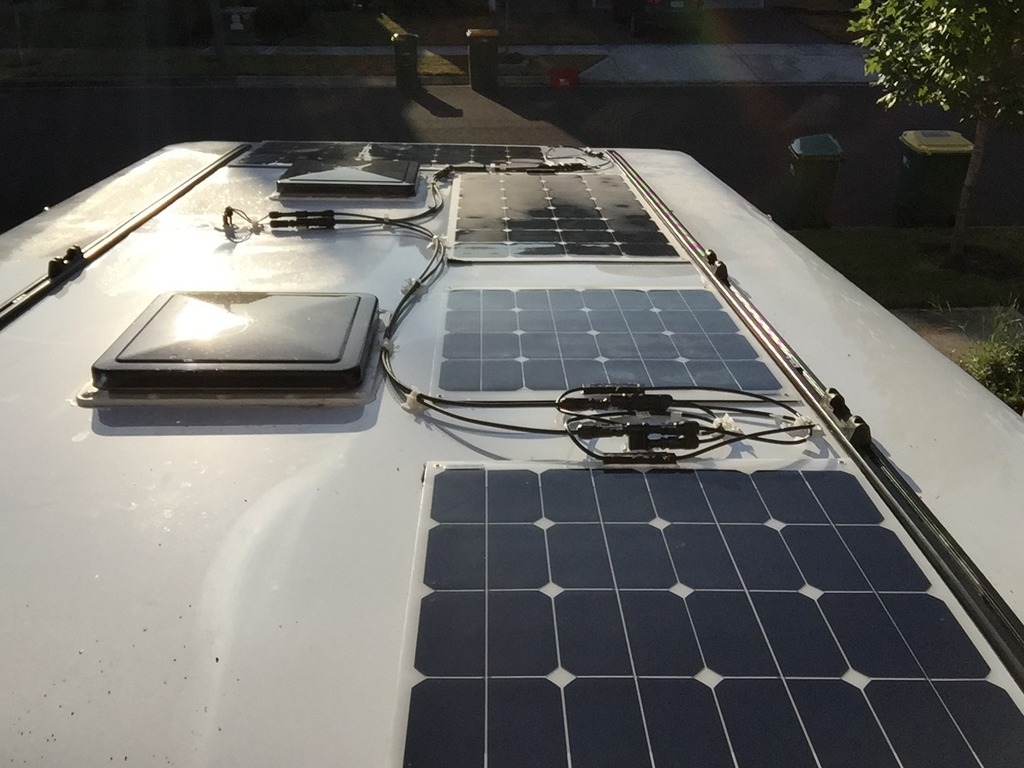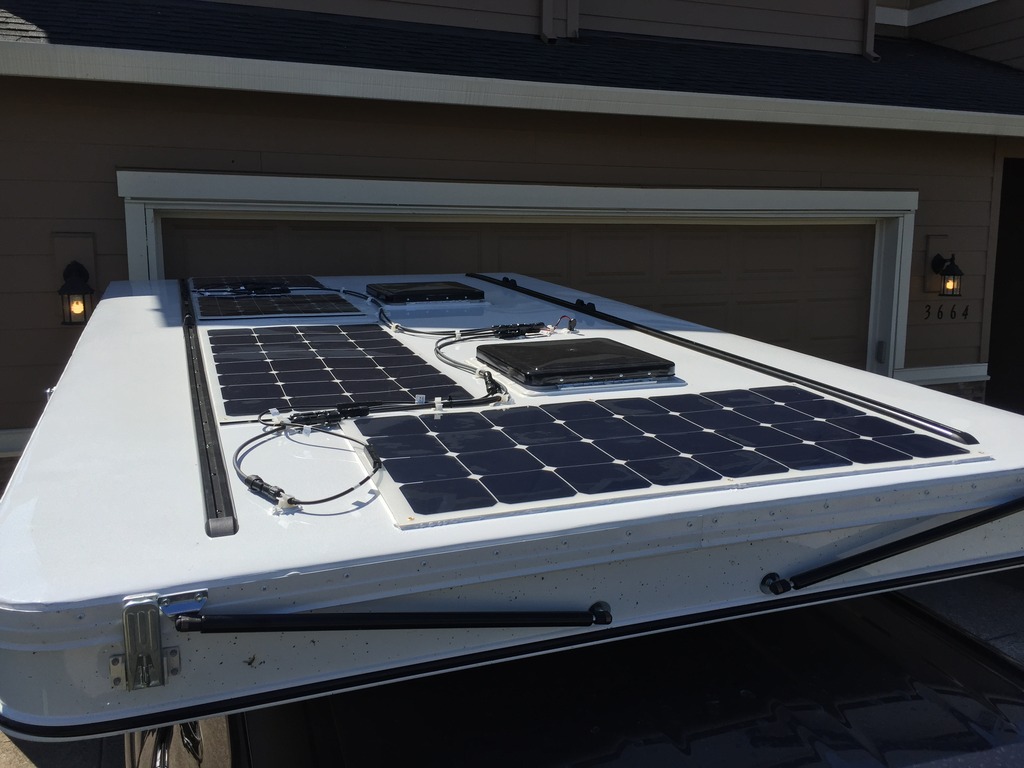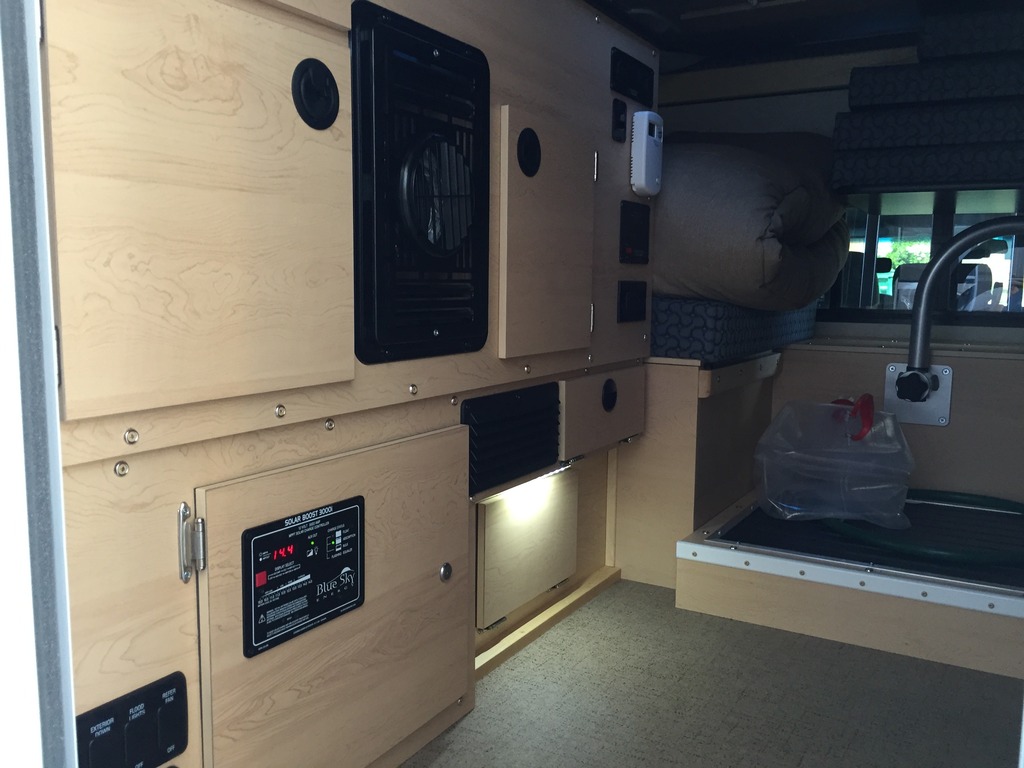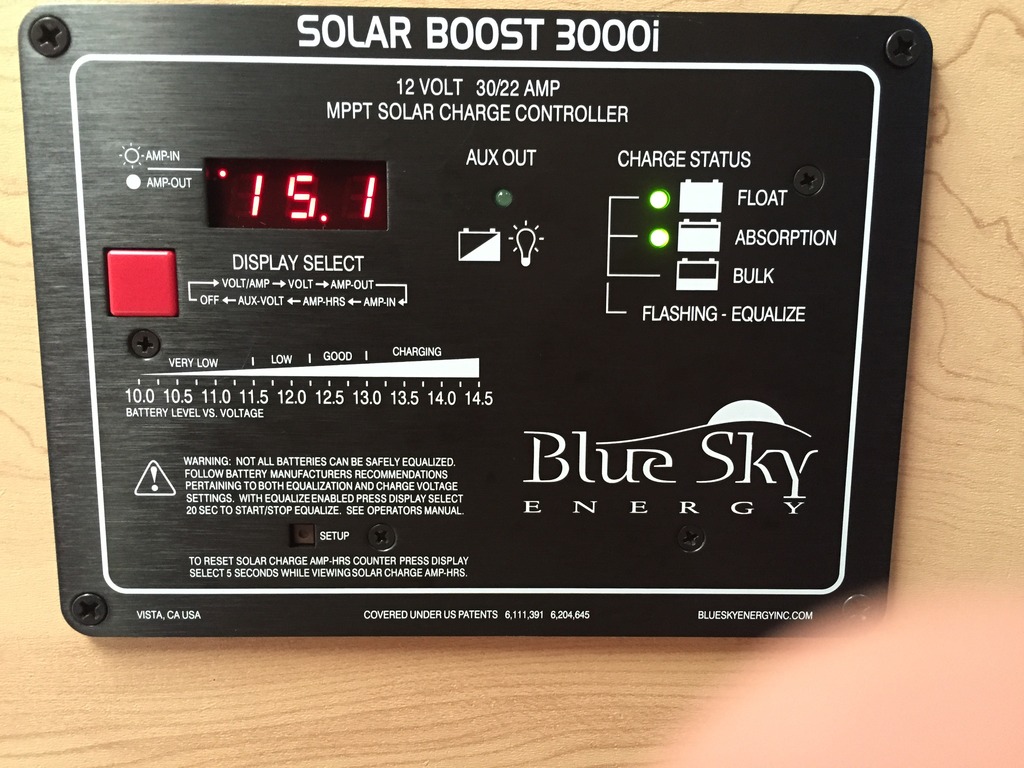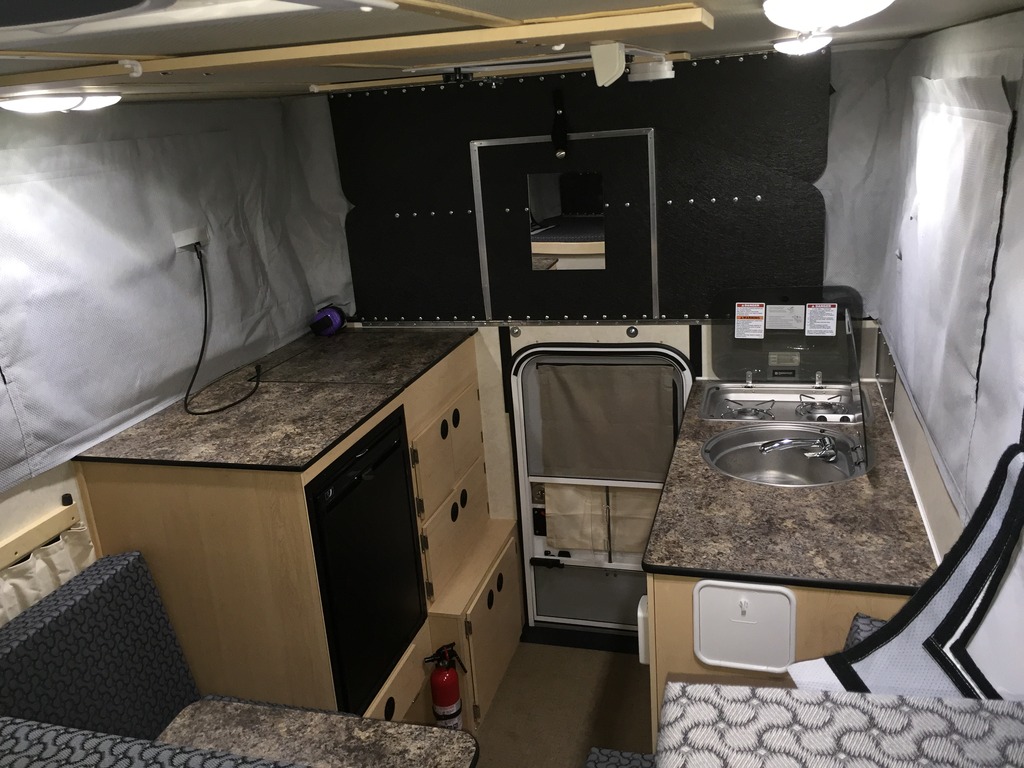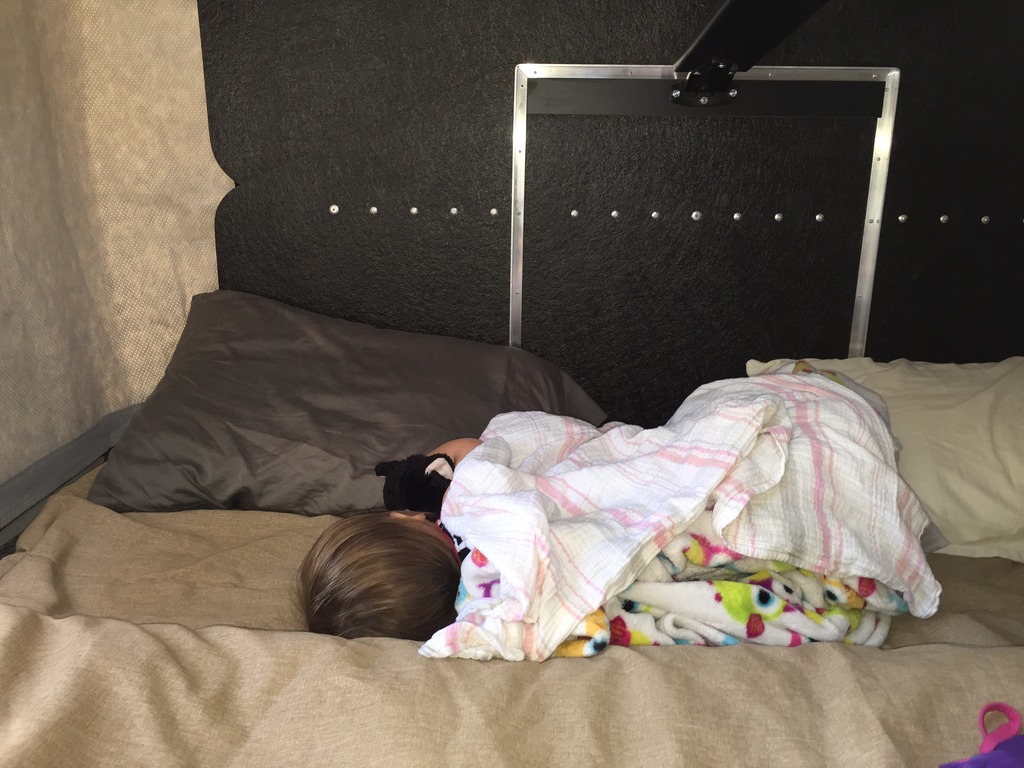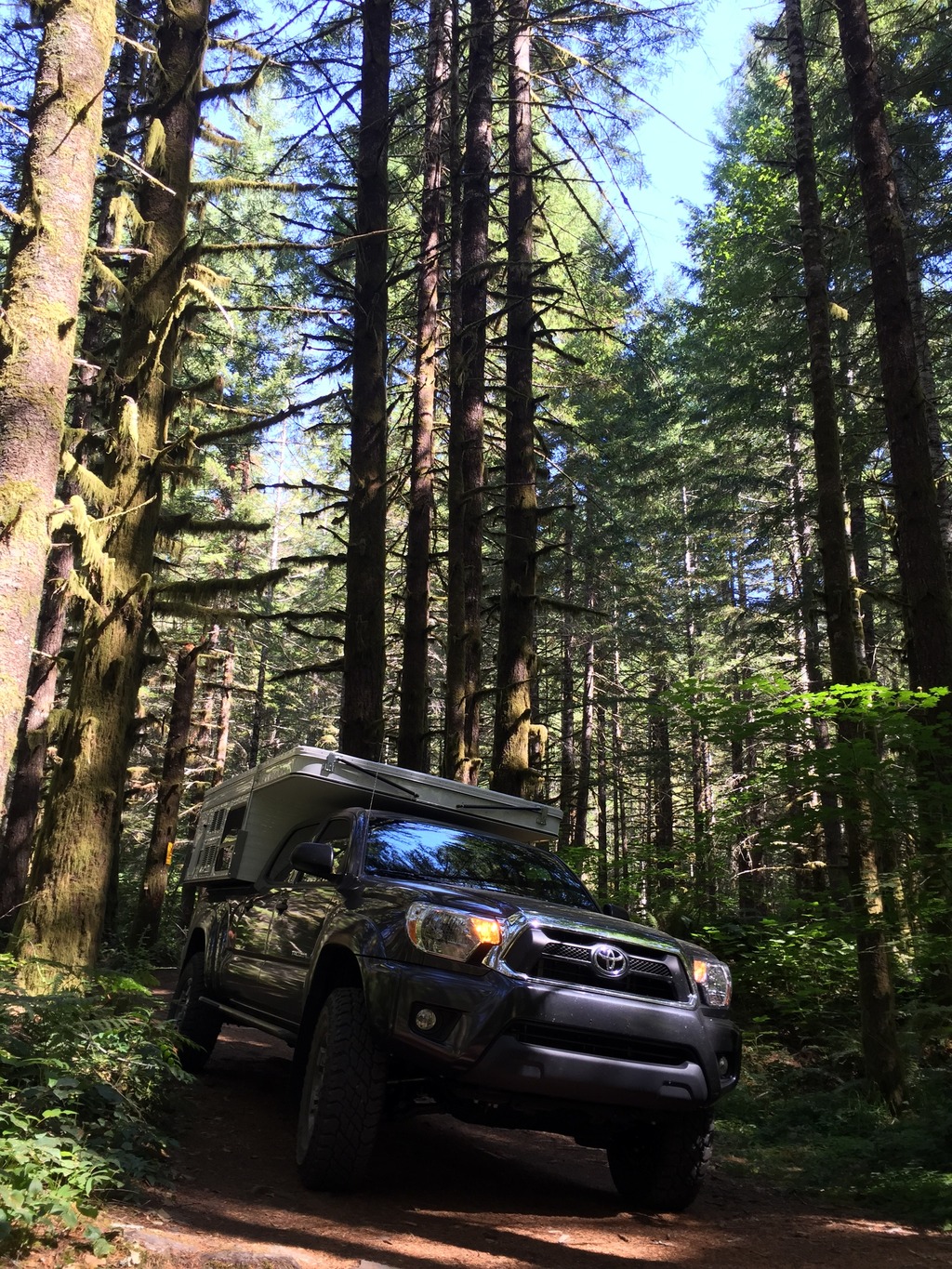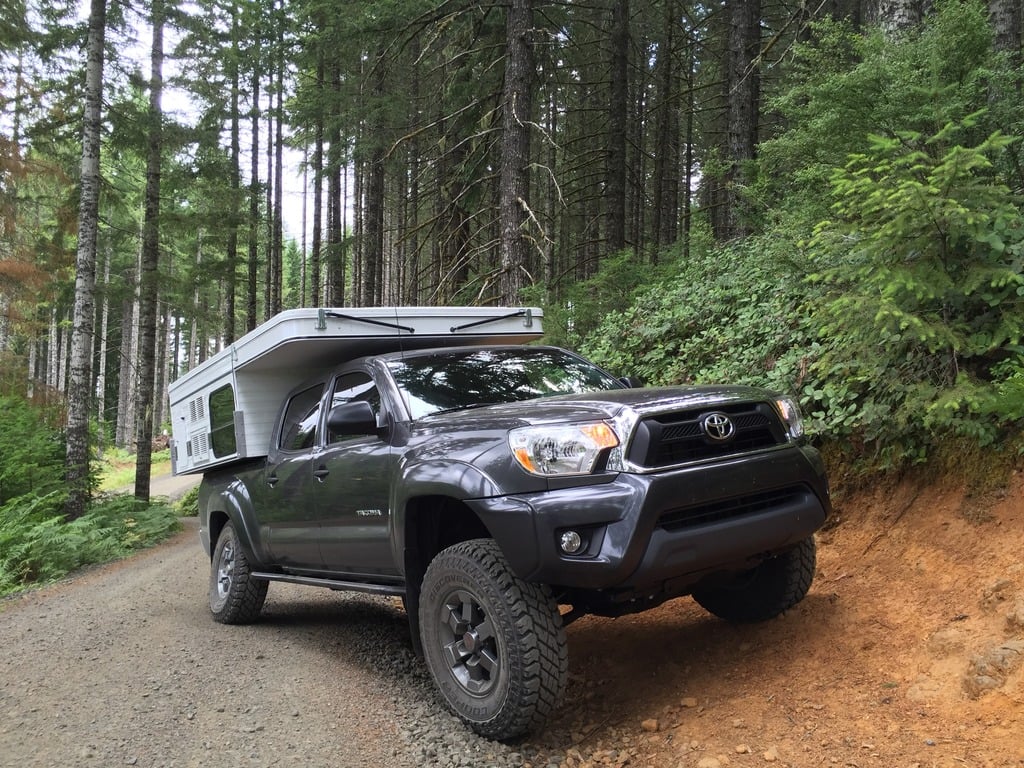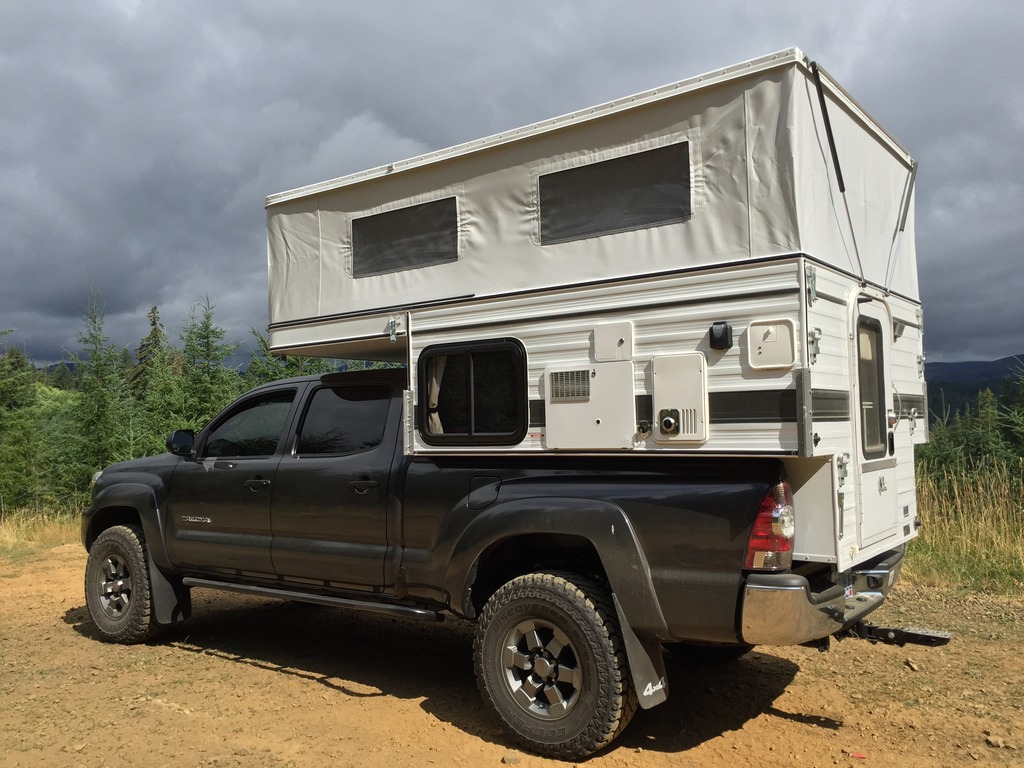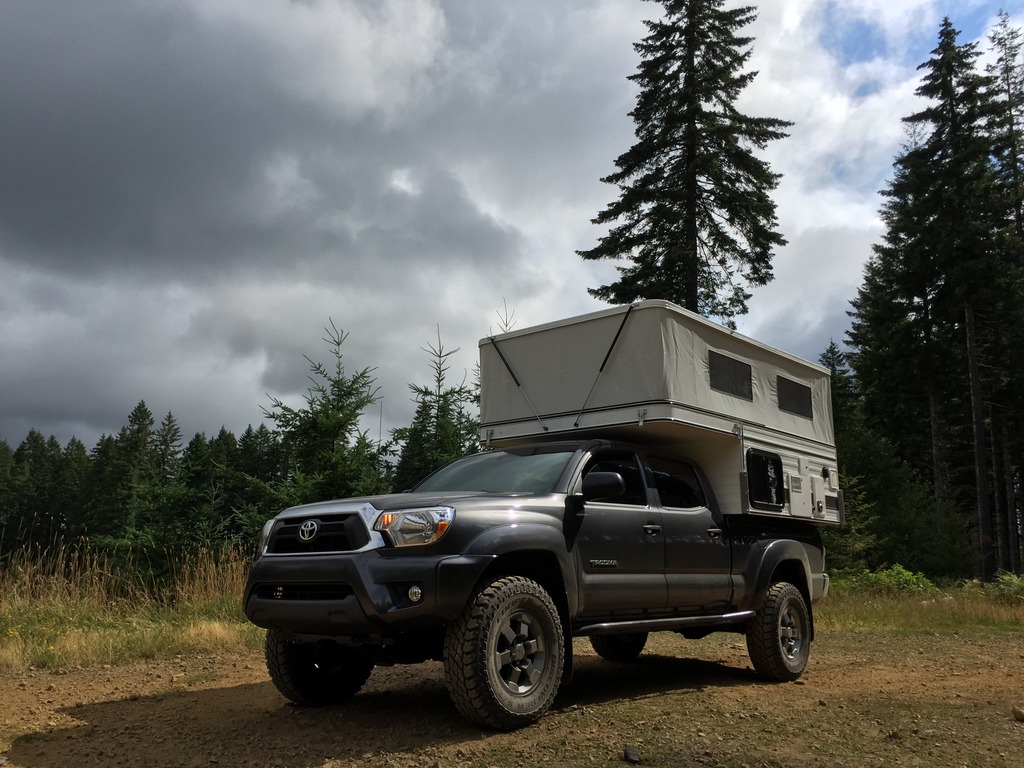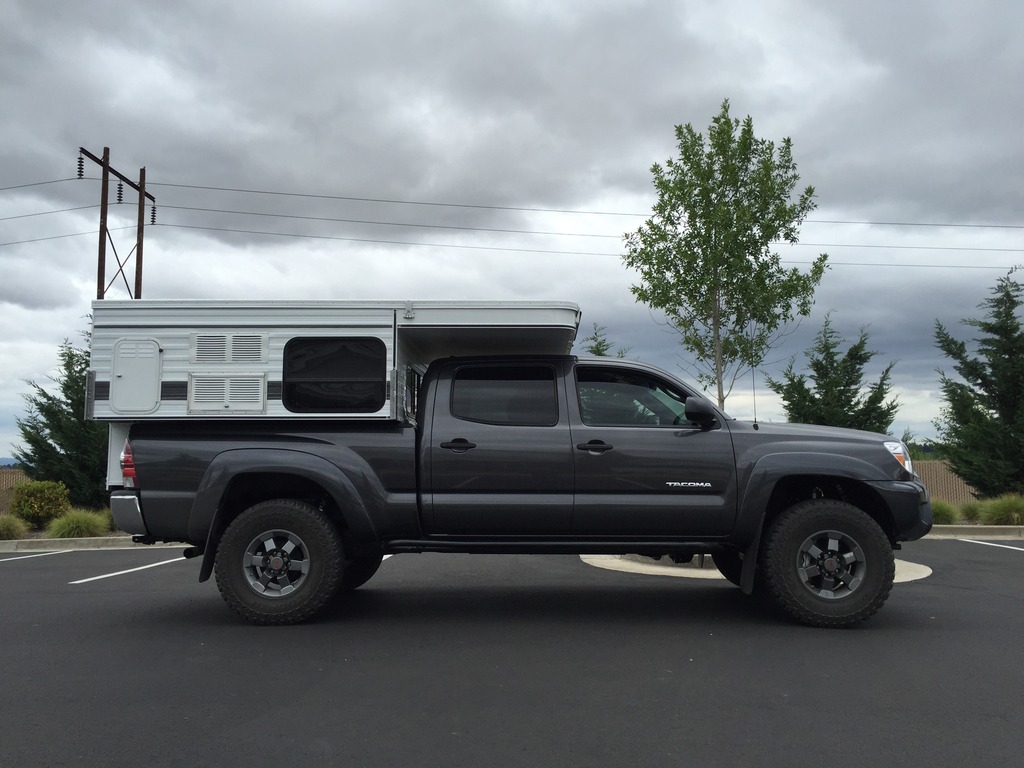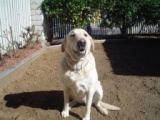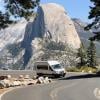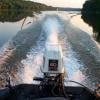My last rig before the truck was a 2012 Jeep Wrangler, heavily modified, with an Ursa Minor J30 camper top. It was a great setup for solo trips, and pretty good for my wife and I. But once we were expecting a little girl, we couldn't figure out how we would camp as a family in the Jeep.
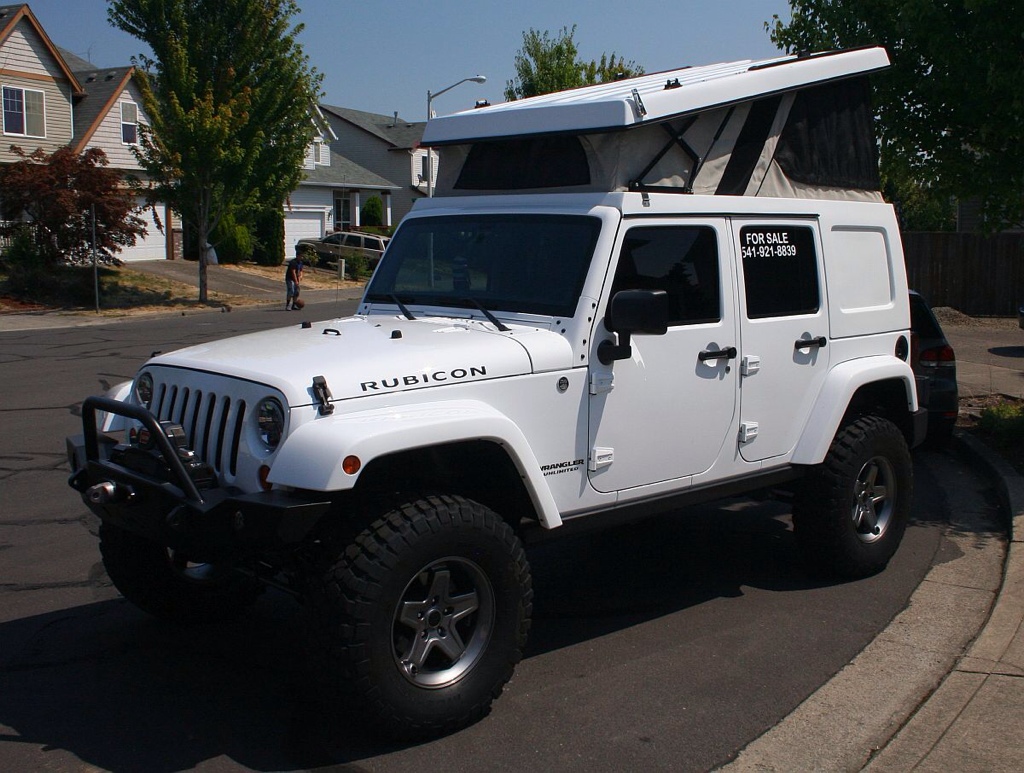
Eventually the Jeep sold, we bought a new house, and along with it a new '15 Tacoma double cab long bed 4x4 at the beginning of March.
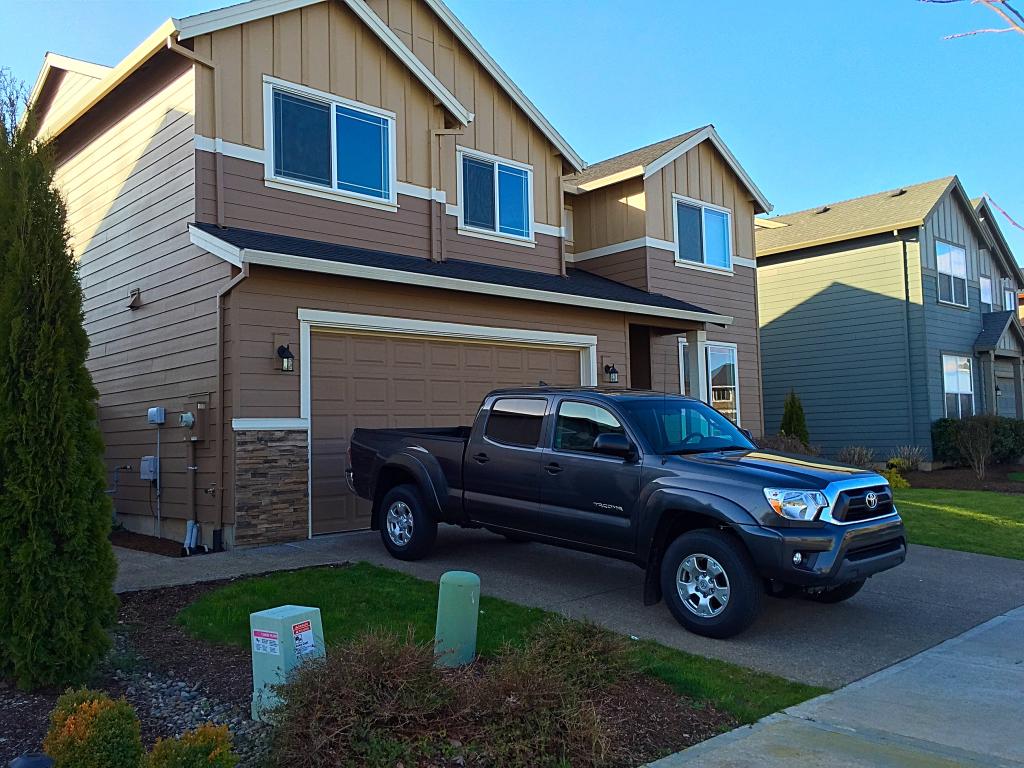
I have had full sized trucks on the past and didn't care for another right now. A Tacoma isn't going to fit on the same Jeep trails, but it will get me further than a full size truck, and fit in the garage with a camper. After picking up the truck I placed an order for a new fleet with Jeff at American RV in Tigard, and had the toyota dealership install my first mod. The TRD supercharger.
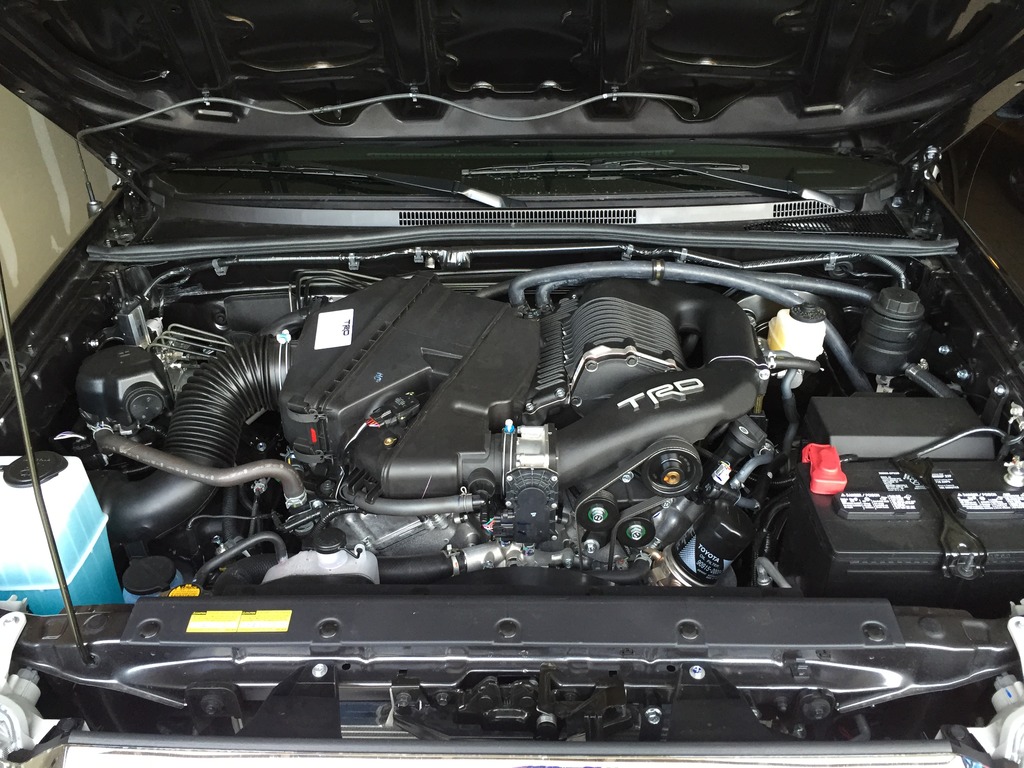
Next was a set of Husky x-act fit floor mats and window tint. Then a large suspension order, though it didn't arrive all at once. The goal was to lift a couple inches, gain some extra travel, adjustable height and dampening, and better performance off road and extended washboard roads etc. Up front I went with Icon extended travel 2.5" coilovers with reseviors and adjustable compression clickers, tubular upper control arms with uni balls, and "super bumps" which are taller softer bump stops from wheelers offroad. I gained 1.5" of down travel, so I set the lift height to 2.5" over stock, leaving 3" of droop from static ride height.
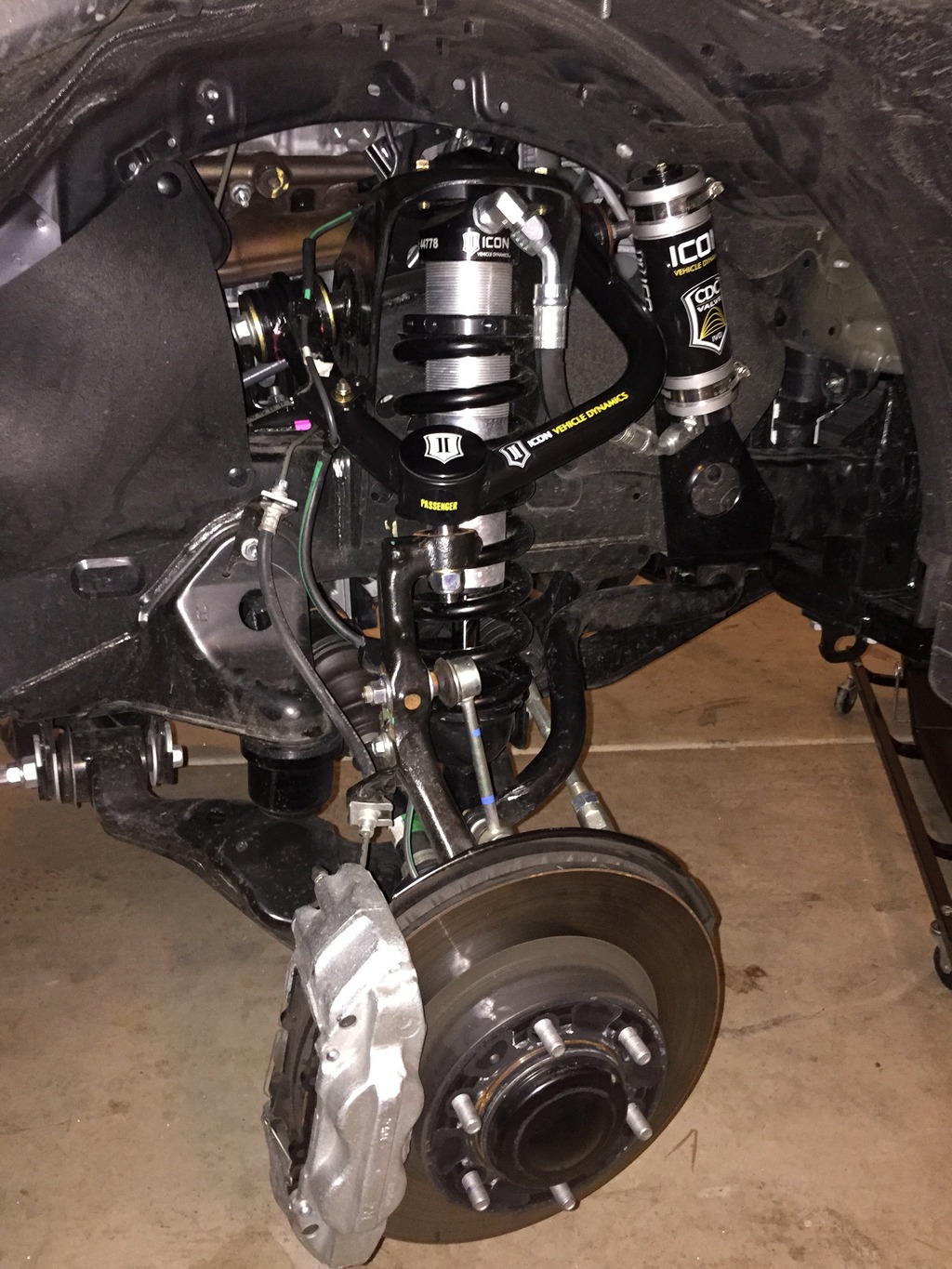
In the rear I started with old man emu leaf springs, all pro u bolt flip kit, and wheelers super bumps in place of the rear bump stops. Weeks later, my custom Icons arrived for the rear. They are 2.5" with reseviors and adjustable compression valving, longer than standard (10.5" travel), and valved 25% firmer than standard. Along with the longer shocks, I installed longer stainless steel brake lines. However I found that the large overload on the leaf spring was limiting compression, and I wasn't even able to hit the bump stops or use the last few inches of shock travel. I decided to disassemble the leaf springs and remove the upper overload, and install the extra lead I had ordered from OME. This would result in a higher spring rate but should allow more overall travel. Here is the final outcome. The empty ride is a little firm but not bad. It does allow more compression and feels much smoother over large bumps.
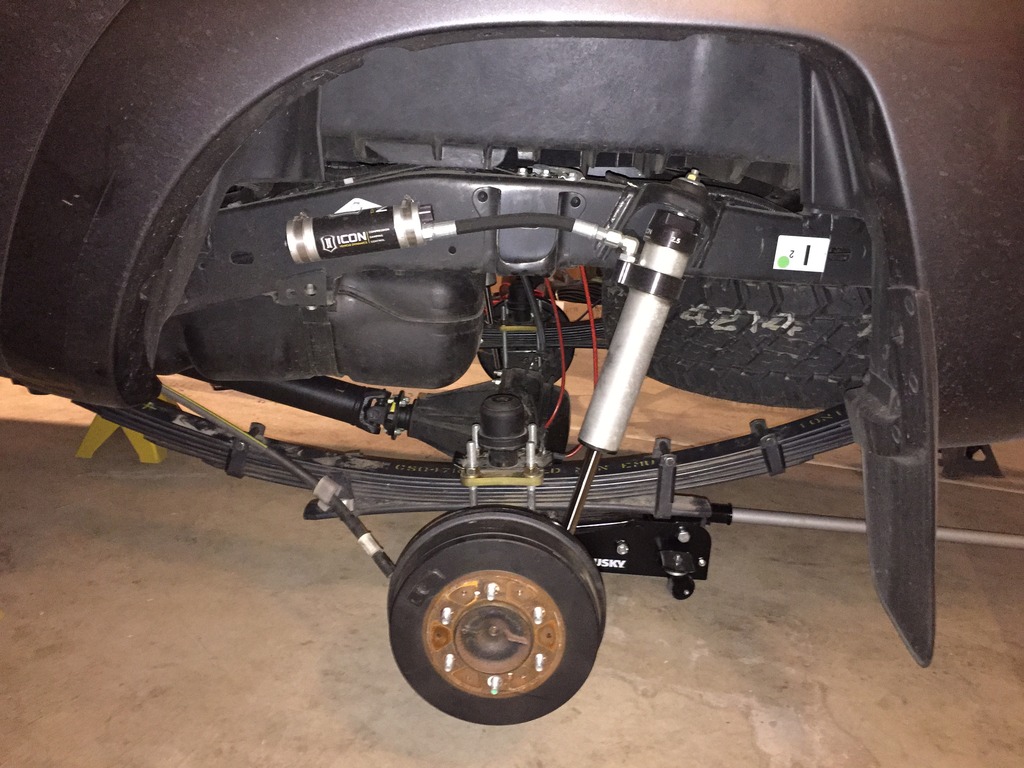
Still, I expected that this wouldn't carry the full weight of a loaded fleet well. Along with those allpro u bolt flip plates, I ordered their timbren bump stop setup. Allpro uses a timbren mount bolted to the u bolt plate, but it is a shorter timbren with 1000lb capacity. I looked online and the normal Tacoma kit comes with a short timbren, but 3000lb capacity timbrens. The short timbrens also only compressed a max of 2.25" or so and are usually a harder rubber. I decided on the A535-55 timbren (listed 1800lb cap), it is taller and softer and compresses over 3". My thought was that these would provide a softer ride, and the springs with the extra leaf would provide great combination, without sacrificing travel. Best of all, with these u bolt plates, I can replace the timbrens with the other bump stops in about 5 minutes. No messing with air lines and bags and fittings. One other huge negative of air bags, for me, is that the bags for Tacomas don't have bump stops. So they can be harsh or bottom out in a bad way. Here is a test fit with the timbren and a 1/2" spacer. Though after installing the camper I installed another 3/8" spacer, soon to be replaced with one 1" spacer.
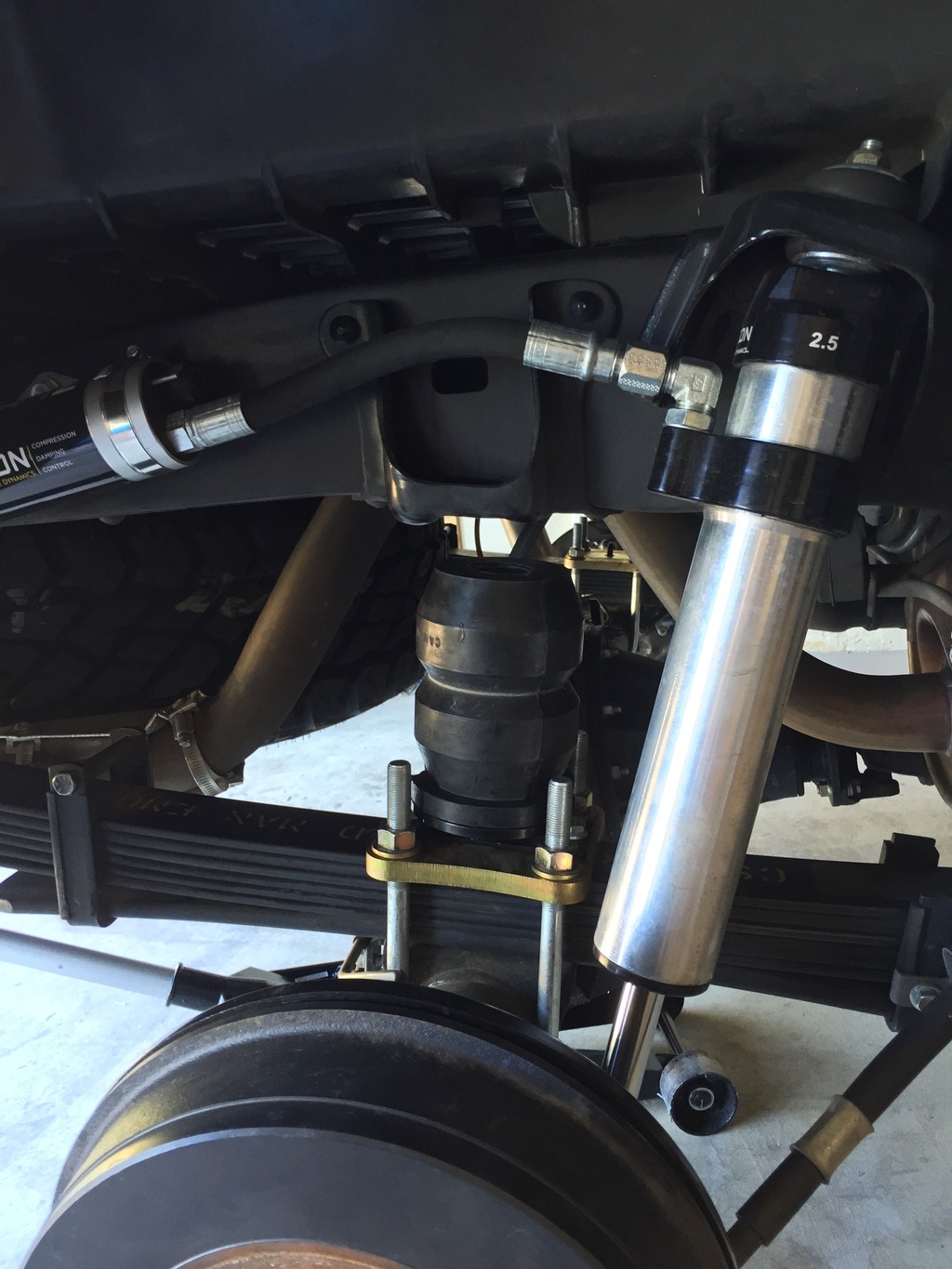
To be continued...
Edited by brianjwilson, 19 July 2015 - 08:03 AM.



